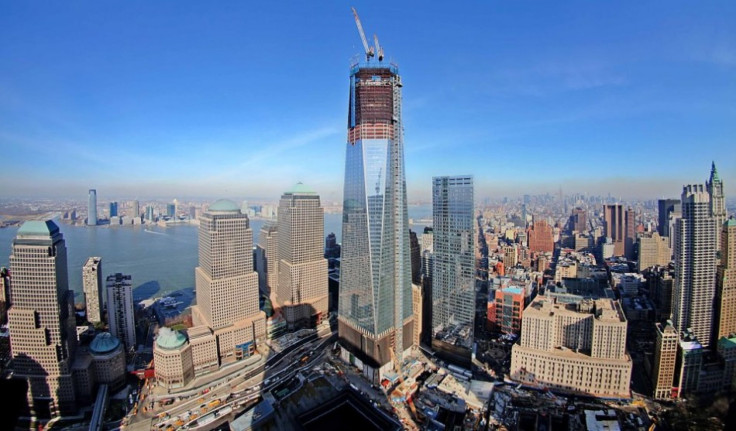The Port Authority and the World Trade Center
Building New York

An audit released this week called the Port Authority of New York and New Jersey a challenged and dysfunctional organization, citing the ballooning costs at the World Trade Center. The estimated cost of redeveloping the site -- including the National September 11 Memorial & Museum and Santiago Calatrava-designed transit center -- has grown to $14.8 billion now from $11 billion in 2008. The Port Authority's projected share of the cost has swelled to $7.7 billion from $6 billion.
The additional cost has been a factor that led to the Port Authority's toll increase last year, a political poison that contributed to the departure of the former executive director, Chris Ward, who joined the construction company Dragados. The new director, Patrick Foye, has said the agency must return to its core mission: the operation and maintenance of the city's bridges and tunnels.
But in coming years, the World Trade Center will continue to be an inevitable focus of attention. Even now, 1 World Trade Center is charging up the skyline, with construction crews building a floor each week. The structure is expected to top out with its spire in the spring and open in 2013. The law firm Chadbourne & Parke is reportedly close to signing a lease, which means about two-thirds of the building's 3 million square feet have been booked. (The other committed tenants are the media company Conde Nast, the Chinese real-estate firm Vantone, and government agencies.)
Although the building's design team, led by David Childs of Skidmore, Owings & Merrill, undoubtedly considered the commercial market, as evidenced by the structure's large, columnless floor plates, economics was not the only factor. New York yearned for the restoration of its downtown skyline, and the tower would inevitably be an icon. But its potential as a target also drove up costs, as it required unprecendented strength for its concrete core and steel beams. An army of unionized construction workers continues to work throughout the site, with the bulk of their wages paid by public funds.
The birth of the new World Trade Center mirrors the creation of the old. The original twin towers were a development so massive -- and speculative -- that no private developer could take it on. So the Port Authority, led by its then-director Austin Tobin, spearheaded the process. It demolished the existing Radio Row, a collection of low-rise stores, and began carving the so-called bathtub in Lower Manhattan to keep out the Hudson River.
In time, the twin towers filled with prestigious companies, and private interests followed. The mall giant Westfield took over the retail space (it also has signed on to control the new World Trade Center mall). And just weeks before the 9/11 attacks, Silverstein Properties committed to a long-term ground lease to control the towers, a deal that would complicate the rebuilding process.
After the 9/11 attacks, a swirl of concerns mixed on the site: commemorating the dead, returning the complex to the city, and, as the Port Authority mandated, restoring the commercial complex. Cost battled with design, and disputes over control of the land led to a standstill in progress. Cost overruns led to revisions of Calatrava's transit hub -- created as a space-age brother to Grand Central Terminal, but characterized by some as a costly extravagance.
The 9/11 Memorial, one of the most sensitive parts of the complex, languished until Chris Ward assumed leadership at the Port Authority, and set a concrete -- but costly -- building schedule that led to its completion by the 10th anniversary of the attacks. The audit pegged the cost of reaching the deadline at $500 million. Meanwhile, construction on the museum at the site has virtually halted because of funding issues, and it is unlikely to be completed by this year's anniversary.
But, for all the turmoil at the site, the Port Authority has taken steps to return it to both the private and public city. The Durst Organization, developer of one of the first new towers to rise in the city after 9/11, One Bryant Park, has taken a 10 percent stake in 1 World Trade Center, and it will manage the building. Larry Silverstein's 4 World Trade Center is rising rapidly, although he lacks tenants for the other buildings planned for the site. And the restoration of Greenwich Street -- combined with the lush open space of the new complex, a sharp contrast to the arid plaza of the former one -- does much to integrate the World Trade Center into the rest of the city.
The complexity and emotional weight of the World Trade Center, coupled with the inherent difficulty of building New York, virtually guaranteed that the rebuilding would be expensive. And, undoubtedly, the Port Authority has made mistakes during the reconstruction, but, as the towers continue to rise, the despair that suffused the site for years has begun to clear.
© Copyright IBTimes 2024. All rights reserved.











